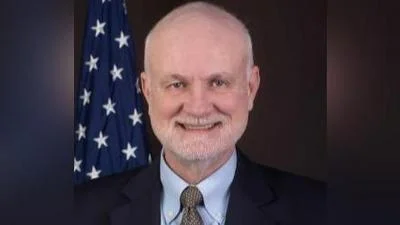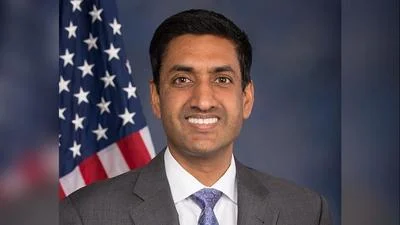John Taylor, Professor of Economics at Stanford University and developer of the "Taylor Rule" for setting interest rates | Stanford University
John Taylor, Professor of Economics at Stanford University and developer of the "Taylor Rule" for setting interest rates | Stanford University
In 2022, Becca Taylor, an associate director at Stanford’s Distinguished Careers Institute, attended a speed jigsaw puzzle competition in Half Moon Bay on a whim and surprised herself by winning. There, she met Susanne Riehemann, who earned her PhD in linguistics at Stanford and was actively looking for competition teammates. Riehemann sent Taylor home with some puzzles and asked her to share her completion times. Taylor finished one that evening, and upon receipt of her time, Riehemann shared her approval.
Since then, the pieces of Taylor’s competitive puzzling career have fallen into place, taking her all the way to the fourth annual World Jigsaw Puzzle Championship in Valladolid, Spain, in September.
“Becca’s become a great part of the community,” Riehemann said. “She’s faster than me now and definitely on a meteoric rise.”
In developing her passion for puzzling, Taylor has made many new friends, redefined her self-identity, and found ways to give back to others.
“It’s been really interesting to discover that in adulthood you can still learn something, particularly something you associate with childhood and being a kid's activity,” Taylor said. “I’ve never been an athlete, and it‘s motivating to discover you have a natural talent or proclivity for a very niche activity late in life.”
U.S. puzzle sales have spiked three times: during the Great Depression; in the 1960s when fine art images were first depicted on puzzles; and during the COVID pandemic, according to Taylor.
European engravers are thought to have created the first jigsaw puzzles in the 18th century. The first jigsaw puzzles were wooden and displayed maps to teach geography. The pieces weren’t interlocking but rather would be pushed together.
The first puzzles were called “dissected maps” and puzzle aficionados were known as dissectologists.
In the 1940s and 50s, advertisers sent residents puzzles of advertisements. In the 1980s, a puzzle company hosted national championships involving hundreds of speed puzzlers in an Ohio dairy barn.
Speed puzzling burgeoned online during the pandemic with live streaming of competitions and puzzle influencers on social media. In recent years, the USA Jigsaw Puzzle Association (JPA), which is a nonprofit organization, and SpeedPuzzling.com emerged as the two main leagues in the U.S.
Taylor is an officer/board member of the JPA, which sanctions some SpeedPuzzling.com events and counts them toward competitors’ rankings.
Riehemann herself started competitive puzzling during the pandemic. “I really enjoy the teams of four because, in addition to puzzling yourself, you have the challenge of working with others,” Riehemann said. “It can get pretty wild and crazy, especially towards the end when you have eight hands all reaching for a few pieces.”
Riehemann taught Taylor the ropes of speed puzzling. Unlike her first competition at the wine bar where food and drinks were allowed; competitors don’t get to see the puzzle image ahead of time so they must strategize quickly once it begins. To start most people immediately dump out all pieces and turn them over; from there styles vary.
Some work on one item first like a red car which Taylor refers to as “noise reduction” while others group pieces into categories according to color or shape. Taylor always starts with dark colors ending with pinks because she dislikes them.
Generally it’s best doing edges first eliminating sizable percentages giving clues for other placements yet if round usually working middle using shapes since interior sharper curve.
If competing as team learning strengths helps divide conquer; team names included “The Piece Corps” & “Jigonometry.” Some excel discerning small details/shades while strength lies recognizing piece shapes like “2x2s” & “castles.” Typically works upside down team competitions fastest no image huge section sky/tree leaves ignoring picture focusing shape explained calming satisfying exercise completed around age five chickenpox distract scratching parents bought 5k-piece depicting lion cheetah obsessively within week joked animal fur kryptonite hard fast head injury years ago helped recover devoid language entirely visual primal brain tingly feeling calms satisfying investing brain regularly bought bit by bit competing hard finishing once even eight hours used self-restraint laughing decompression after work still does hosts swaps year drops campus finals hoping respite QR code box track goes turned Australia Europe introduced new friends colleagues across campus discovered midst warm funny engaging wide variety quirky positive social impact recruits others Linnea Shieh head librarian Terman Engineering Library started husband signed state did well placing tenth invited USA Nationals fifth competed rekindled love prefers hard pandemic forces try normally wouldn’t saying going drag pair events fun totally ridiculous hundred room dumping frenetic strikes bizarre insights delivered inbox each weekday morning




 Alerts Sign-up
Alerts Sign-up